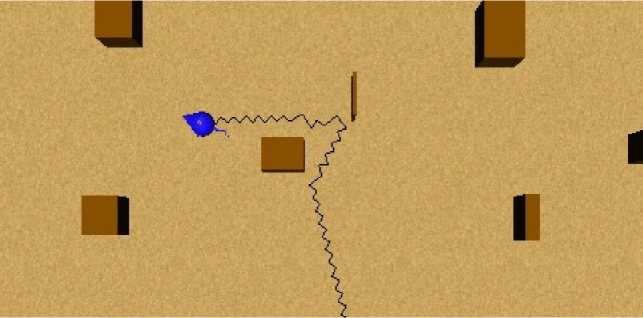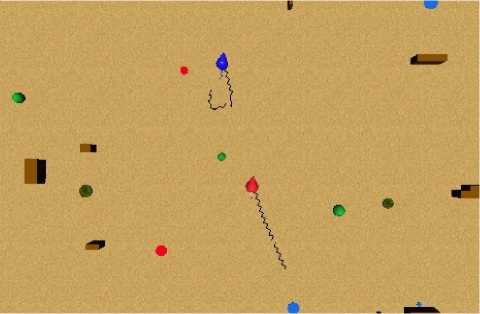
Figure 26. An animat avoiding obstacles reflexively.
6.1.2. Modelling reactive behaviours
In this experiment we have a wandering prey animat and a hungry predator, as shown
in Figure 27. But when the prey animat perceives the predator, he reactively runs away, as seen
in Figure 28. We can see that the presence of the predator was enough to trigger the runaway
behaviour, but not as directly as with reflex behaviours. If there are other stimuli that may
trigger reactive behaviours, BeCA will select the most imperative one, depending on the
external signals, to be executed25.

Figure 27. A wandering prey animat and an
exploring hungry predator.

Figure 28. The prey animat runs away reactively
after perceiving a predator.
25See Section 3.6.
74
More intriguing information
1. EU enlargement and environmental policy2. The name is absent
3. The name is absent
4. Industrial districts, innovation and I-district effect: territory or industrial specialization?
5. Methods for the thematic synthesis of qualitative research in systematic reviews
6. APPLYING BIOSOLIDS: ISSUES FOR VIRGINIA AGRICULTURE
7. The name is absent
8. Spousal Labor Market Effects from Government Health Insurance: Evidence from a Veterans Affairs Expansion
9. The name is absent
10. Inhimillinen pääoma ja palkat Suomessa: Paluu perusmalliin